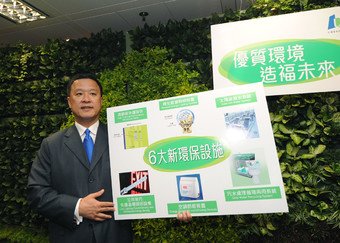
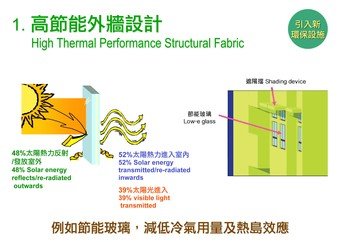
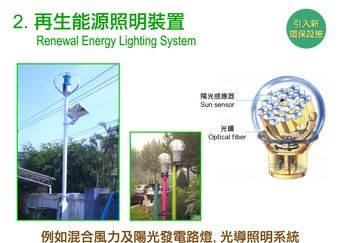
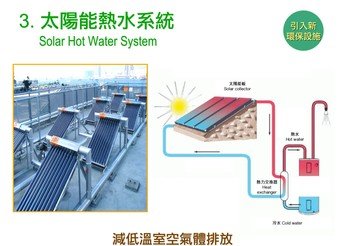
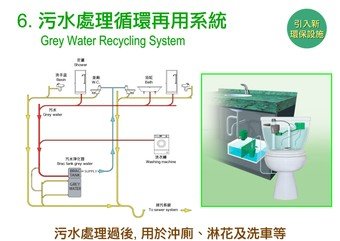
URA Policy on Environmental Sustainability
The Board of the Urban Renewal Authority (URA) today (Monday)
endorsed a comprehensive policy on environmental sustainability to
formalize and enhance its commitment to fostering a quality living
environment in Hong Kong. This policy will be applicable to
its future urban renewal initiatives. The Lee Tung Street
project in Wan Chai will be the first one implementing this
enhanced policy.
Speaking at a media briefing on the enhanced policy, the Chairman
of the URA, Mr Barry Cheung, said: "I hope that this policy, which
has grown out of URA's environmental initiatives to date,
references to overseas experience, relevant existing environmental
technology and advice from consultants, will arouse public
awareness of protecting the environment. In doing so, we aim to set
an example for the property industry and, thereby, play our part in
encouraging the industry and the community to adopt more
environmentally-friendly practices. Our common objective is to at
least meet and preferably exceed the present standards and, by
striving for continuous improvement, make our contribution to
sustainable future for Hong Kong."
The URA is committed to improving the city's quality of life
through comprehensive planning of its projects, provision of more
public open space and other measures. All along, the URA has
stipulated that the design and construction of its redevelopment
projects must, in keeping with the Urban Renewal Strategy,
incorporate green initiatives with respect to energy efficiency,
water conservation, facilities for collection of recyclable waste,
use of recycled materials and reduction of construction
waste. As a result, two of our completed redevelopment
projects, Mount Davis 33 in Kennedy Town and Vision City in Tsuen
Wan, achieved Platinum accreditation under the Hong Kong Building
Environmental Assessment Method (HK-Beam), which is its highest
standard.
"In order to take our environmental initiatives forward, we have
engaged an environmental consultant to develop a comprehensive
policy drawing on URA's past work as well as the practical
experience gained in the planning, design and implementation of
development projects around the world. This policy will be
applied in implementation of all 4Rs of URA's holistic urban
renewal programme, i.e. Redevelopment, Rehabilitation, pReservation
and Revitalisation," he said.
In a nutshell, the URA's environmental policy guidelines cover the
following six main environmental provisions:
- energy efficiency: sun-shading provisions, energy efficiency of electrical, lighting, lift and escalator installations, water-cooled chiller system, heat recovery system etc
- water conservation: dual flushing/low volume cistern, condensate collection system and rain-water collection system for irrigation or flushing etc
- environmentally-friendly building materials: materials non-damaging to ozone, recycled plastic bottles and rubber tyres for children's playground flooring, recycled plastic and wood wastes for flooring of landscaped areas etc
- greening: landscaped open space, roof garden, vertical greening, street planting etc
- facilities for collection of recyclable waste: e.g. domestic waste
- reduction of construction waste and environmental nuisance: waste management plan, introduction of noise mitigation measures etc
The environmental consultant commissioned by the URA will now explore what other practical technologies which can be adopted by URA in its future projects. The practical technologies under study include:
- High thermal performance structural fabric, e.g. e-glass to reduce the overall cooling load and heat island effect.
- Renewable energy lighting system, e.g. hybrid street lamps and electronic sunlight collectors.
- Solar hot water system to reduce carbon emissions.
- Low lighting power/density and advanced energy saving light fittings for common areas, e.g. LED light fixtures to reduce electrical energy consumption.
- Energy saving air-conditioning devices, e.g. carbon dioxide detection sensors to reduce the fresh air intake during non-peak hours.
- Grey water recycling system for toilet flushing, cleansing & irrigation after proper treatment.
The Lee Tung Street project will be the first one incorporating
these environmental provisions in a comprehensive way. "The
findings of a consultancy study on the project show that
application of these green features can reduce its carbon dioxide
emissions by about 23%. This reduction in the project's
carbon footprint is equivalent to about 170,000 trees," said Mr
Cheung.
"We will use every appropriate and practical measure and apply new
thinking to protect the environment when implementing our future
projects. Our environmental policy is based on the twin
objectives of meeting today's community's aspirations for quality
living and benefitting the next generation through environmentally
friendly urban renewal" he said.
Later this month, the URA will invite local and overseas experts
and professionals to a seminar to exchange views and experience on
the subject of building "green homes" for a sustainable future of
Hong Kong.
- ENDS -
